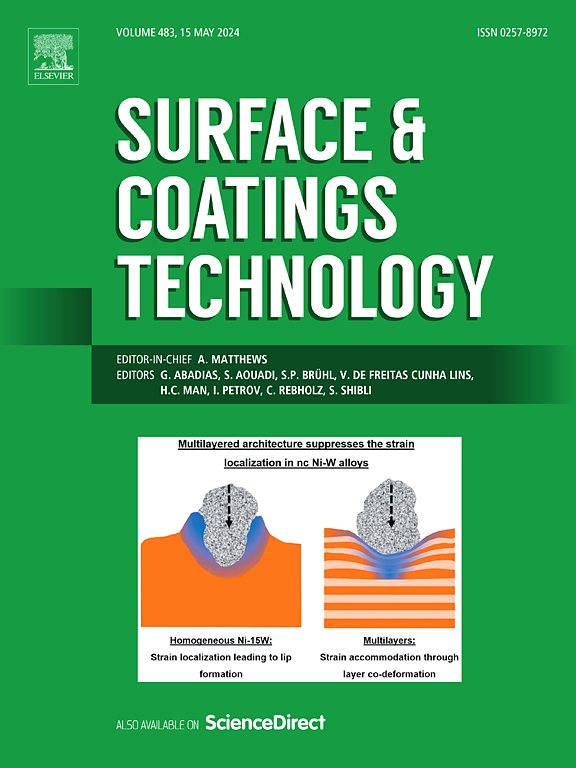Bipolar high-impulse electrophoretic process for cerium nanoparticle deposition on polylactic acid scaffolds
IF 5.3
2区 材料科学
Q1 MATERIALS SCIENCE, COATINGS & FILMS
引用次数: 0
Abstract
Electrophoretic deposition is a well-known technique for depositing micro and nanoparticles on substrates of different geometries. The deposited coatings have applications in various areas, especially biomedical uses. Nevertheless, few studies focus on electrophoretic deposition on non-conductive substrates such as biopolymer scaffolds. The present paper uses a modified electrophoretic process to investigate the deposition of cerium oxide nanoparticles (CeO-NPs) on a polylactic acid (PLA) biocomposite scaffold substrate. The substrates were arranged in two ways: one with the scaffold samples freely moving in the liquid medium between the electrodes and the other with the scaffolds attached to the biased electrode. This paper's main goal is to use bipolar pulsed high voltages (if compared to traditional values used in electrophoretic deposition) with a time-off between pulses trains to control the power and prevent overheating. SEM and XPS analyses confirmed the nanoparticles' presence both on the surface – with Ce/C ratio up to 7.6 × 10−2 for the freely moving scaffolds and 2.8 × 10−2 for those attached to the biased electrode – and inside the scaffold's pores – presenting Ce/C ratio up to 2.2 × 10−2 on one scaffold immersed in ethanolic medium – but also found agglomerates. Cell viability tests showed that the treated scaffolds enhance cell spreading and can be further studied for biomedical applications. The results also show that the agitation allied with altering voltage pulses may be beneficial for the deposition on the scaffold's surface and interior using water as solvent.
求助全文
约1分钟内获得全文
求助全文
来源期刊

Surface & Coatings Technology
工程技术-材料科学:膜
CiteScore
10.00
自引率
11.10%
发文量
921
审稿时长
19 days
期刊介绍:
Surface and Coatings Technology is an international archival journal publishing scientific papers on significant developments in surface and interface engineering to modify and improve the surface properties of materials for protection in demanding contact conditions or aggressive environments, or for enhanced functional performance. Contributions range from original scientific articles concerned with fundamental and applied aspects of research or direct applications of metallic, inorganic, organic and composite coatings, to invited reviews of current technology in specific areas. Papers submitted to this journal are expected to be in line with the following aspects in processes, and properties/performance:
A. Processes: Physical and chemical vapour deposition techniques, thermal and plasma spraying, surface modification by directed energy techniques such as ion, electron and laser beams, thermo-chemical treatment, wet chemical and electrochemical processes such as plating, sol-gel coating, anodization, plasma electrolytic oxidation, etc., but excluding painting.
B. Properties/performance: friction performance, wear resistance (e.g., abrasion, erosion, fretting, etc), corrosion and oxidation resistance, thermal protection, diffusion resistance, hydrophilicity/hydrophobicity, and properties relevant to smart materials behaviour and enhanced multifunctional performance for environmental, energy and medical applications, but excluding device aspects.
 求助内容:
求助内容: 应助结果提醒方式:
应助结果提醒方式:


